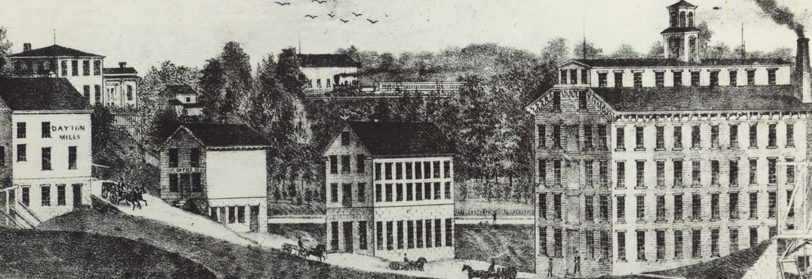CORRESPONDENCE
Dayton
The Fox river at this point is frozen over.
Len Hubbell is spending this week in Chicago.
A. W. Ladd made a business trip to Aurora last week.
Charles Sheppler has been laid up for a few days with a lame back.
John Marshall of Serena made a business call here on Saturday.
George Galloway enjoyed his duck at his own fireside on Thanksgiving day.
Mr. and Mrs. Moore spent a couple of days last week with friends at Earlville.
The Mutual Protective League meets on Wednesday night at Woodman hall.
Miss Mary Coleman and Miss Mary Cloat spent Wednesday and Thursday at Streator.
John Hippard has joined the T., P., & C. W. brigade and is now one of their teamsters.
Miss Mary Dunn of Ottawa spent Sunday with the Misses Mary and Maggie Coleman.
Mrs. Edwards and daughter, Mamie, of Ottawa spent Monday at Mr. and Mrs. James Timmons.
Mr. Isaac Green and family were guests of Mr. and Mrs. O. W. Trumbo on Thanksgiving day.
Mrs. John Channel and A. W. Ladd were visiting Mr. and Mrs. Beik’s at Ottawa on the 28th.
Corn husking is nearly over in the corn fields, but has just commenced at the fireside in the store.
Miss Jennie Barnes starts for Joliet in a few days to spend the winter with her sister, Mrs. Winn Green.
Mrs. Marguerite Mills and Mrs. Brown of South Ottawa spent Friday with Mrs. George Galloway.
One hundred and fifty bushels of corn were sold here on Monday for sixty cents per bushel, cash.
John Green and son, Percival, former residents here for many years, spent Sunday with friends here.
Mrs. John Gibson and son, Fred, left for Chicago on Tuesday, where they will make their home for the present.
Roy McBrearty, operator for the Q. at Denrock, spent Thanksgiving with his parents, Mr. and Mrs. J. McBrearty.
Mr. and Mrs. George La Pere dined with Mrs. La Pere’s parents, Mr. and Mrs. William Lohr, on Thanksgiving day.
Mr. and Mrs. Ed McClary spent Thanksgiving with Mr. E. H. Pederson and wife, deputy U. S. marshal at Yorkville.
Miss Blanche McGrath and Miss Kate Hogan of Streator were guests of the Misses Colman on Thanksgiving day.
The ticket winning the watch at the raffle on Saturday night was No. 31, and was held by Joseph Futterer of Ottawa.
William and Walter Breese and Lowell Hoxie and wife of Aurora spent Thanksgiving with Mr. and Mrs. John Breese.
John Campbell, feeder watchman at Dayton, has tendered his resignation, the same going into effect December 1st, 1901.
The Woodman Lodge will elect their officers on Tuesday night, December 10th, at 7:30, at their hall. A large attendance is expected.
On account of the scarcity of water in the feeder the electric plant was compelled to shut down on several occasions the last few days.
Bert Edwards, who has been employed as teamster for George Green, has gone to Streator, which city he expects to make his future home.
William Collamore, Jr., of Ottawa and Miss Olson of near Morris, gave Thanksgiving at the home of William Collamore, Sr., and wife, on the 28th.
Mrs. Ed Vernon and two children left for Somonauk on Saturday morning, where she will be the guest of Mr. and Mrs. Joseph Colb for a few days.
John Cisco of Ottawa is now acting as feeder watchman until the successor of John Campbell, resigned, is appointed.
W. Wheeler and R. Doran left here for Chicago on Wednesday morning where they will visit the fat stock show and will remain until Saturday.
Wilmot Van Etten, agent for the Q. at Batavia, with his wife and three sons, Clare, Walcott and Frank, dined with Mr. and Mrs. O. W. Trumbo on Thanksgiving day, returning on the afternoon train for Batavia.1
- The Ottawa [Illinois] Free Trader, December 6, 1901, p. 12, cols. 1-2





